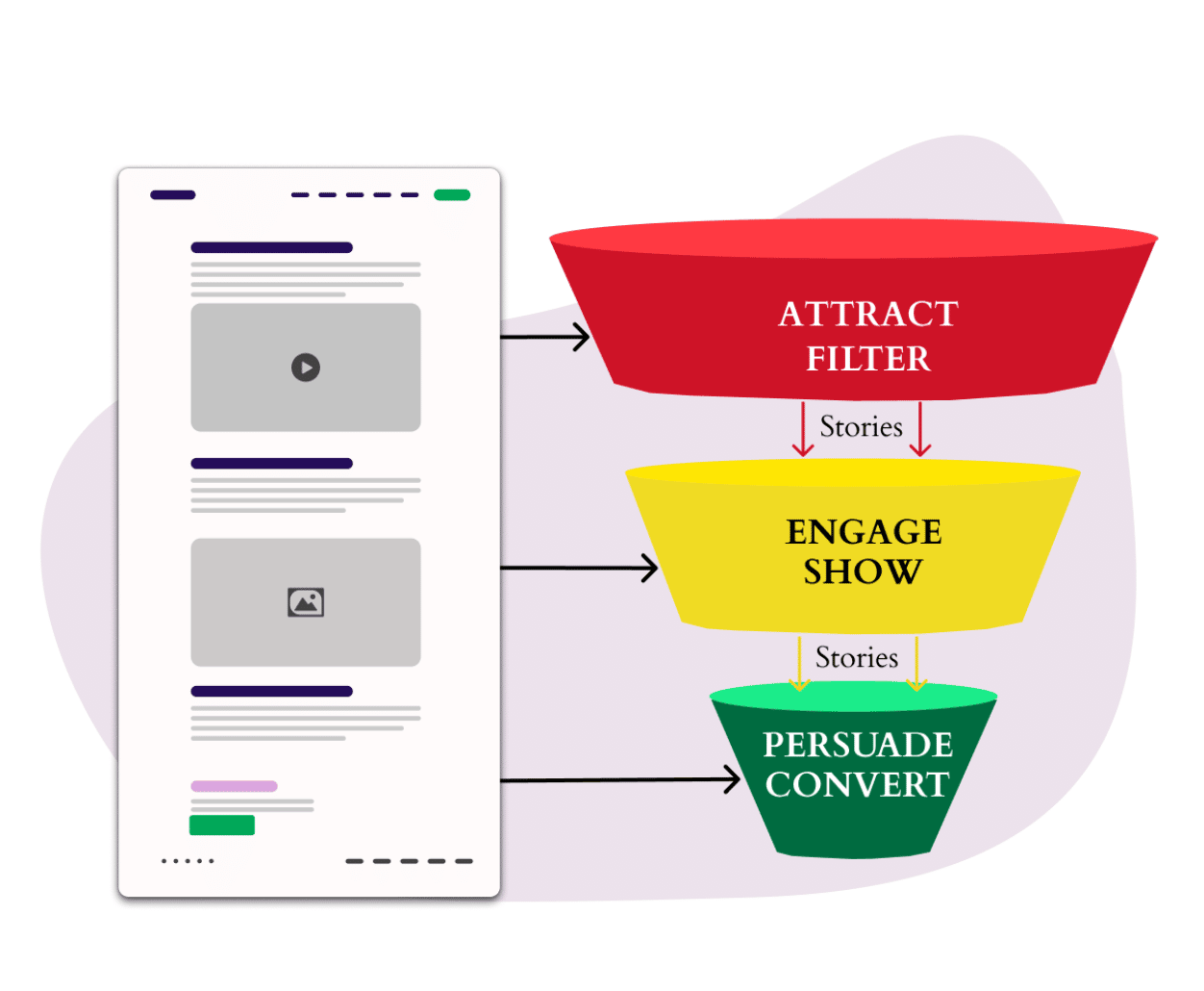You need to focus on lead generation to boost your SaaS sales pipeline in the short term. This involves creating a process to attract potential customers and get them interested in your product or service.
There are many different ways to generate leads, and in this article, we will discuss some of the most effective methods to build a sales funnel. We will also provide tips on converting those leads into paying customers.
The importance of the sales funnel
Sales pipelines are essential to any business but often misunderstood or overlooked. Simply put, a sales pipeline is a potential customer’s process when considering your product or service. It starts with awareness, then moves on to interest, followed by consideration, and finally, decision.
Each stage of the funnel represents an opportunity to convert a lead into a customer. That’s why it’s so important to have a well-defined marketing funnel SaaS in place. By understanding the needs of your customers at each stage of the funnel, you can provide them with the information and support they need to make a purchase.
Doing so will boost sales and build loyalty and brand advocacy. So don’t underestimate the power of the sales pipeline- it could be the key to unlocking your company’s true potential.
SaaS sales funnel stages
Now that we’ve covered the basics, let’s take a closer look at each stage of the SaaS sales funnel.
Awareness
The first stage of the funnel is awareness. This is when a potential customer becomes aware of your product or service and starts to learn about what it does. To generate leads at this stage, you must ensure that your target audience is aware of your brand.
There are many ways to do this, but some of the most effective methods include content marketing, search engine optimization (SEO), and social media marketing.
Interest
Once you’ve generated awareness, you need to generate interest in your product or service. The best way to do this is by providing potential customers with the information they can use to make an informed decision.
This could be in the form of blog posts, eBooks, white papers, or even infographics. Ensure your content is informative and relevant to your target audience.
Consideration
The next stage is a consideration, where potential customers start to compare your product or service with alternatives. At this stage, you must provide potential customers with detailed information about your product or service, including pricing plans, features, and benefits.
You can do this through case studies, webinars, or free trials.
Decision
Finally, we come to the decision stage where potential customers decide whether or not to purchase your product or service. To help them reach a decision, you must provide them with a clear call to action (CTA). This could be a discount code, a free shipping offer, or a risk-free trial.
Following these steps can boost your SaaS sales funnel and generate more leads in the short term. However, it’s important to remember that lead generation is just one part of the equation. You need a well-defined sales process to convert those leads into customers.
Here are eight steps you can take to build a successful Saas marketing strategy
1. Map your customer journey
If you’re marketing a SaaS product, it’s essential to have a clear understanding of your customer’s journey. This means understanding the different stages customers go through, from when they become aware of your product to when they make a purchase.
By understanding the customer journey, you’ll be able to create a marketing strategy that meets customers’ needs at each stage. For example, if you know that potential customers are actively searching for solutions to their problems, you can create content that addresses their specific needs.
Or, if you know that customers are ready to buy, you can focus your marketing efforts on generating leads and closing sales. By taking the time to understand the customer journey, you’ll be able to build a funnel SaaS marketing strategy that delivers results.
2. Develop your marketing strategy
Now that you understand your customer’s journey, it’s time to develop your marketing strategy. This means creating a plan that outlines the goals you want to achieve, the channels you’ll use to reach your target audience, and the budget you have available.
When developing your strategy, it’s important to remember that each stage of the customer journey requires a different approach. For example, at the awareness stage, you’ll want to focus on generating traffic with SEO and content marketing.
At the consideration stage, you’ll want to focus on providing information with case studies and webinars. And finally, at the decision stage, you’ll want to focus on conversion with discounts and free trials. By understanding the needs of each step of the customer journey, you can develop a marketing strategy that will drive results.
3. Optimize your sales process
To close sales, you need to have a well-defined sales process in place. This means having a system in place for generating leads, nurturing prospects, and closing deals. If you don’t have a sales process, you’ll likely lose potential customers at each stage of the journey. To optimize your sales process:
Start by identifying the critical steps in your customer’s journey.
Create a system for tracking and managing leads at each stage.
Make sure you have a clear call to action (CTA) at each journey stage so that potential customers know what they need to do next.
By optimizing your sales process, you’ll be able to close more deals and grow your business.
4. Streamline your onboarding process
If you want customers to stick around, you must ensure they have a positive experience with your product from the start. A streamlined onboarding process helps them get the most out of your product.
To streamline your onboarding process, start by creating a welcome email for new customers. This email should introduce them to your product and help them get started.
Then, generate onboarding emails for each stage of the customer journey. These emails should provide information about how to use your product and answer any questions they may have.
Finally, create a follow-up email after they’ve been using your product for a while to see how they’re doing and offer any additional help they may need. By streamlining your onboarding process, you can help ensure that customers have a positive experience with your product from the start.
5. Promote product implementation
Successfully promoting product implementation will result in increased customer satisfaction and renewals. You can encourage the implementation product by sending regular emails offering tips, tricks, and advice for using your product.
You can also create a how-to guide or video that walks customers through the process of using your product.
Finally, you can offer live or recorded webinars that provide an overview of your product and how to use it. Promoting product implementation can help ensure that customers get the most out of your product and are satisfied with their purchases.
6. Create a robust support system
You must create a robust support system if you want customers to stick around. This means having a team that can help answer questions and solve problems. You can create a powerful support system by offering live chat, phone, and email support. You can also create an FAQ section on your website that helps address common issues. Building a solid support system can help ensure that customers have a positive experience with your product and are more likely to renew their subscriptions.
7. Standardize your renewal process
The renewal process is an integral part of the customer journey. You need to ensure that you have a system for renewing customers. This system should include sending out reminders, offering discounts, and providing customer support. Standardizing your renewal process can help ensure that customers are more likely to renew their subscriptions.
8. Track your performance
To optimize your sales funnel, you need to track your performance. This means following the number of leads, the number of deals closed, and the number of customers lost. You can identify areas where you need to improve by tracking your performance.
SaaS Sales Funnel Examples
Now that you understand the basics of a SaaS sales pipeline, let’s look at some examples.
The first example is from Simple Tiger. They have a four-step sales pipeline that starts with generating awareness. Then, they move potential customers to consideration with a free trial or demo. Next, they close the deal with a pricing page. Finally, they provide support and upsells to keep customers happy.
The second example is from Victoreduoh. They have a three-step sales pipeline that starts with generating traffic. Then, they move potential customers to their landing page, where they can sign up for a free trial. Finally, they close the deal with a pricing page.
The third example is from Autogrow. They have a four-step sales pipeline that starts with generating traffic. Then, they move potential customers to their landing page, where they can sign up for a free trial or demo.
Next, they close the deal with a pricing page. Finally, they provide support and upsells to keep customers happy.
SaaS companies need to have a sales pipeline to be successful. By following these tips, you can boost your SaaS sales pipeline in the short term and drive results for your business.
By understanding the customer journey, developing a marketing strategy, optimizing your sales process, and streamlining your onboarding process, you can help ensure that potential customers become paying customers. So what are you waiting for?
Get started today and see the results for yourself!
Ready to give ManyChat a try to shorten your SaaS sales funnel?















